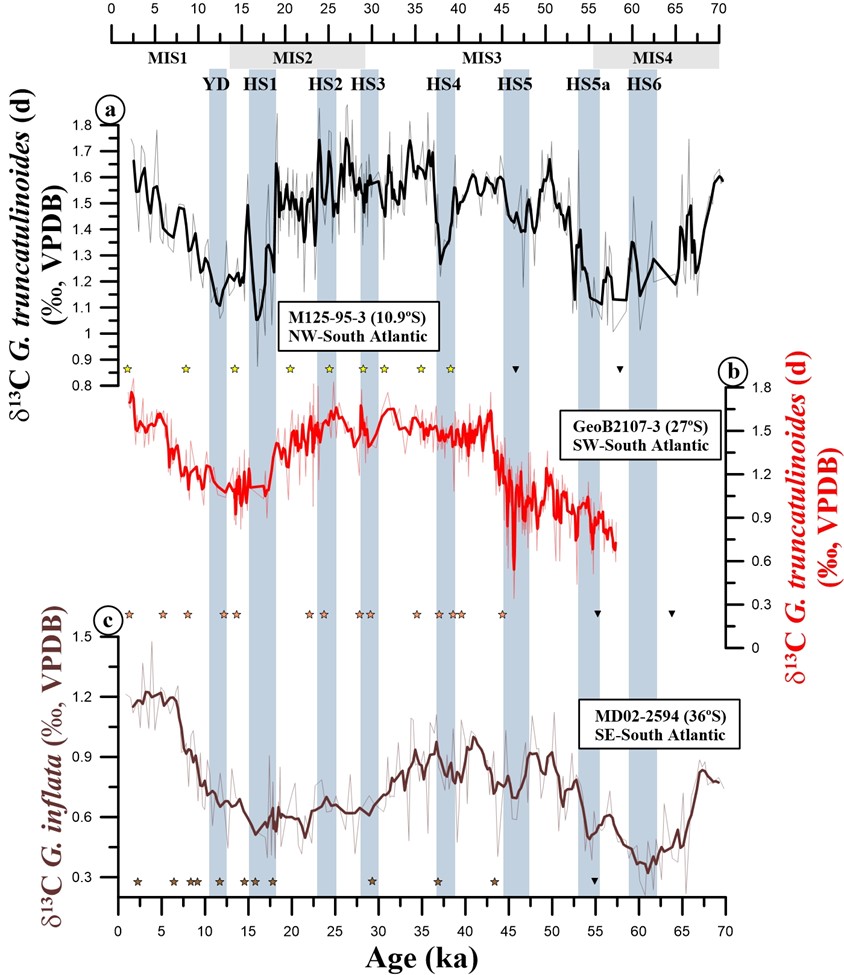
Pinho, T.M.L., Chiessi, C.M., Campos, M.C., Portilho-Ramos, R.C., Martínez-Méndez, G., Venancio, I.M., Nascimento, R.A., Crivellari, S., Albuquerque, A.L.S., Arz, H.W., Tiedemann, R., Bahr, A., Mulitza, S.
Negative stable carbon isotope (δ13C) excursions in the marine upper water column have been related to the release of aged oceanic CO2 to the atmosphere during millennial-scale events of the last glacial called Heinrich Stadials (HS). Different driving mechanisms have been proposed to explain upper water column δ13C variations. In order to fully capture the δ13C inventory of the South Atlantic Central Water (SACW) we utilized high temporal-resolution thermocline-dwelling foraminiferal δ13C data from three marine sediment cores located at the NW, SW, and SE portions of the South Atlantic. Our data allows a basin-wide assessment of SACW δ13C millennial-scale variability. The SE- and NW-South Atlantic thermocline δ13C records reveal concurrent negative excursions during most HS, which contrasts with the lack of negative excursions in the SW-South Atlantic thermocline δ13C record. Considering the marked similarity between these δ13C records and the local predicted dissolved inorganic carbon (δ13Cpred), we attribute the SACW δ13C variability during HS to the local thermodynamic air-sea isotopic equilibration. Such resemblance was also observed on the long-term timescale, which suggests that thermodynamic air-sea isotopic equilibration was the main factor controlling the δ13C of SACW as well. However two exceptions were observed. First, in the SW-South Atlantic, a decoupling between δ13C and δ13Cpred between 50 and 45 ka B.P. that we attributed to an enhanced primary productivity. Second, in the SE-South Atlantic, a decoupling between δ13C and δ13Cpred between 35 and 20 ka B.P. that we attributed to a northward shift of the Subtropical Front.
